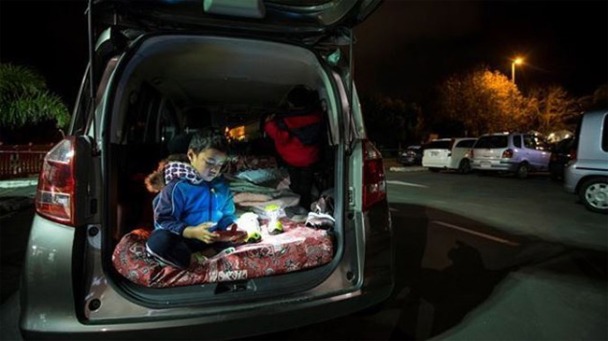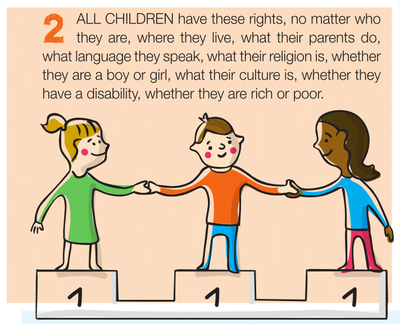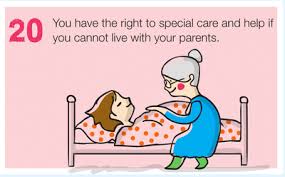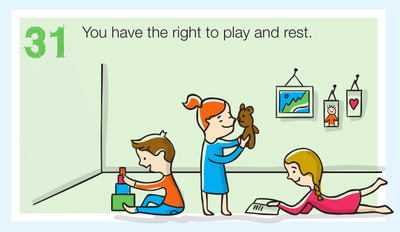
Young people have an innate sense of right and wrong, fair and unfair. Explaining the basics of human rights in age appropriate ways with stories and examples can set the foundation for a lifelong commitment to social responsibility and global citizenship.
As a parent to a preschooler and a professor of peace and human rights education, here are my top picks for children’s books that discuss important issues—and that are visually beautiful. Some of the books listed offer an overview of rights; the majority show individuals and organizations past and present who have struggled to overcome injustices. All offer different levels of child-friendly images, concepts and text.

With my son who is 3, sometimes we will skip certain passages or pages, but introducing him to books like the ones listed below that include characters of different races, religions, genders, abilities, sexual orientations, and other backgrounds at an early age will hopefully lay the foundation for deeper engagement with these texts and issues later on. Lately, he has been making tea in his play kitchen for Martin Luther King Jr. and the other day asked about Nelson Mandela’s grandchildren.
Some of these books are on our shelf at home, others we have found at the library or at friends’ houses.
What’s on your list of go-to books for talking about human rights and social justice issues with your children? Let’s keep the list growing in the comments section below!
**These books should be easily searchable, and I’ve created a book list on Amazon.com atthis link with all the books mentioned in this post.
The Right to Equality & Peace
1. We are all Born Free by Amnesty International
About the basics of human dignity as elaborated in the United Nations Universal Declaration of Human Rights
2. Whoever you Are by Mem Fox
About the common humanity we all share regardless of race, color, religion, nationality, gender, ability or sexual orientation
3. Can you Say Peace? By Karen Katz
A book about how peace looks in different countries around the world and a celebration of September 21 – the date the United Nations has declared the International Day of Peace
4. A is for Activist by Innosanto Nagara
A colorful board book with an introduction to speaking up and acting for social change whether related to LGBTQ rights, racial justice, or sustainability.
The Right to Education
5. Separate Is Never Equal: Sylvia Mendez and Her Family’s Fight for Desegregation by Duncan Tonatiuh
About the landmark 1947 case fought by a Latino family to desegregate whites-only schools in California that served as a precursor to the Brown vs. Board decision in 1954.
6. Malala, a Brave Girl from Pakistan/Iqbal, a Brave Boy from Pakistan: Two Stories of Bravery by Jeanette Winter
About two young advocates for educational rights who were both attacked in Pakistan—Malala Yousafzai and the lesser-known Iqbal Masih. While Iqbal didn’t survive the attack on him, Malala went on to advocate for the right to education for girls worldwide and win the Nobel Peace Prize in 2014.
7. The Story of Ruby Bridges by Robert Coles
About a young woman at the forefront of school desegregation in 1960 after the Brown vs. Board. The book shows her fortitude in enduring harassment from angry mobs to get a quality education.
8. Waiting for BiblioBurro by Monica Brown (author) and John Parra (illustrator)
Inspired by the real-life story of Luis Soriano, who started a mobile library with donkeys carrying hundreds of books over long distances for children in rural areas of Colombia.
The Right to Migrate and Seek Asylum
9. Mama’s Nightingale by Edwidge Danticat (author) and Leslie Staub (illustrator)
Written by award-winning Haitian-American novelist, Edwidge Danticat, this book is about a family separated by the U.S. immigration system and how love transcends borders and orders of deportation.
10. Pancho Rabbit and the Coyote: A Migrant’s Tale by Duncan Tonatiuh
Young Pancho the Rabbit misses his father who has gone north and sets out to find him, but encounters a coyote whose help comes at a high cost. This book introduces the hardships that thousands of migrant families face.
(To read more of this article, please follow the link below…)
http://www.niahouse.org/blog-fulton/2016/11/3/40-childrens-books-about-human-rights-social-justice



























